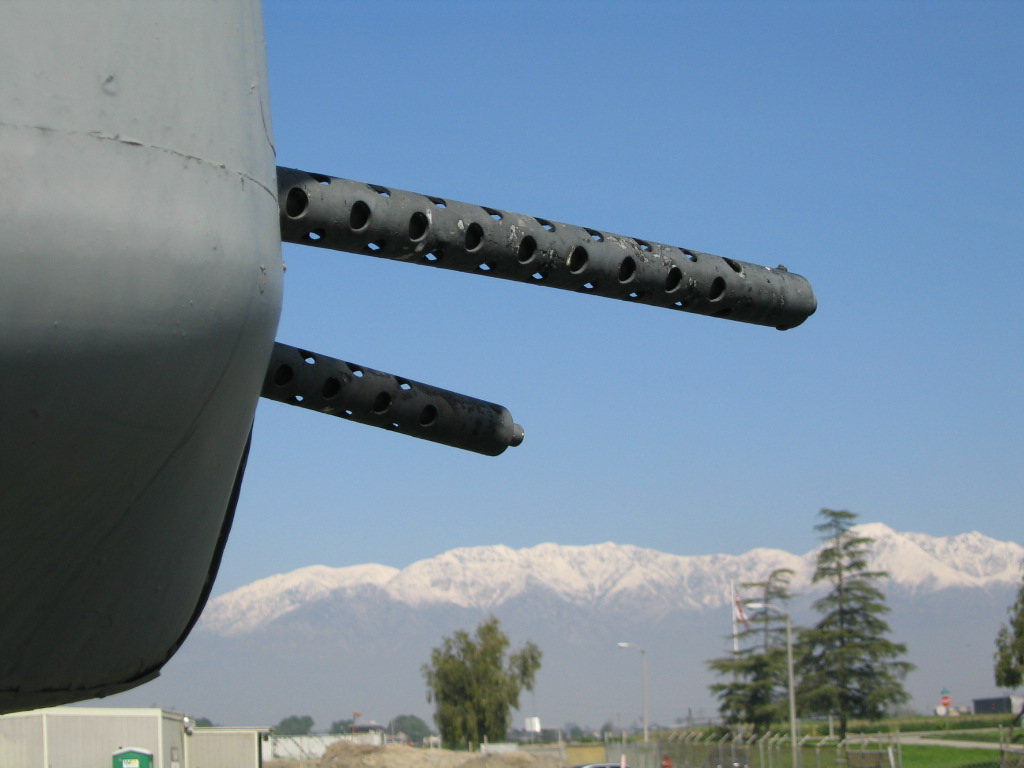
The nose turret of Boeing B-17G s/n 44-83684,
"Piccadilly Lilly II," keeps watch on the distant San Gabriel mountains.
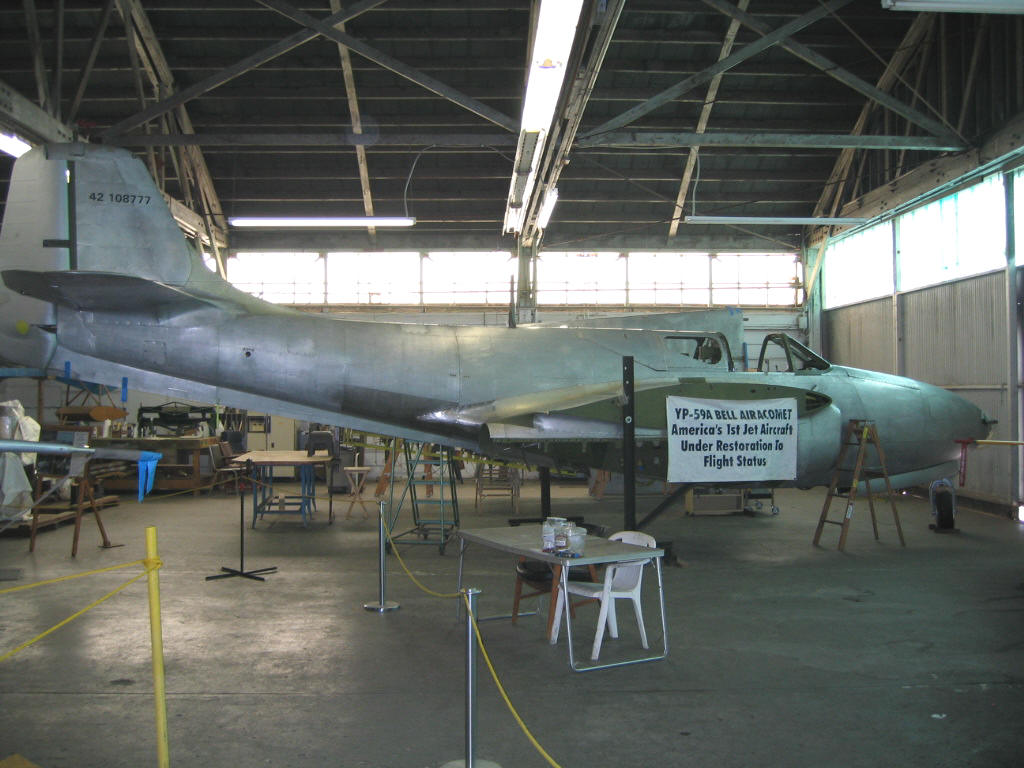
This
extremely rare Bell YP-59A Airacomet is under restoration to flying
condition. The Airacomet was the first jet aircraft in U.S. service, and
this example, s/n 12-108777, is believed to be the tenth airframe in the
production run. It served at Santa Maria AFB, California in the 1950s.
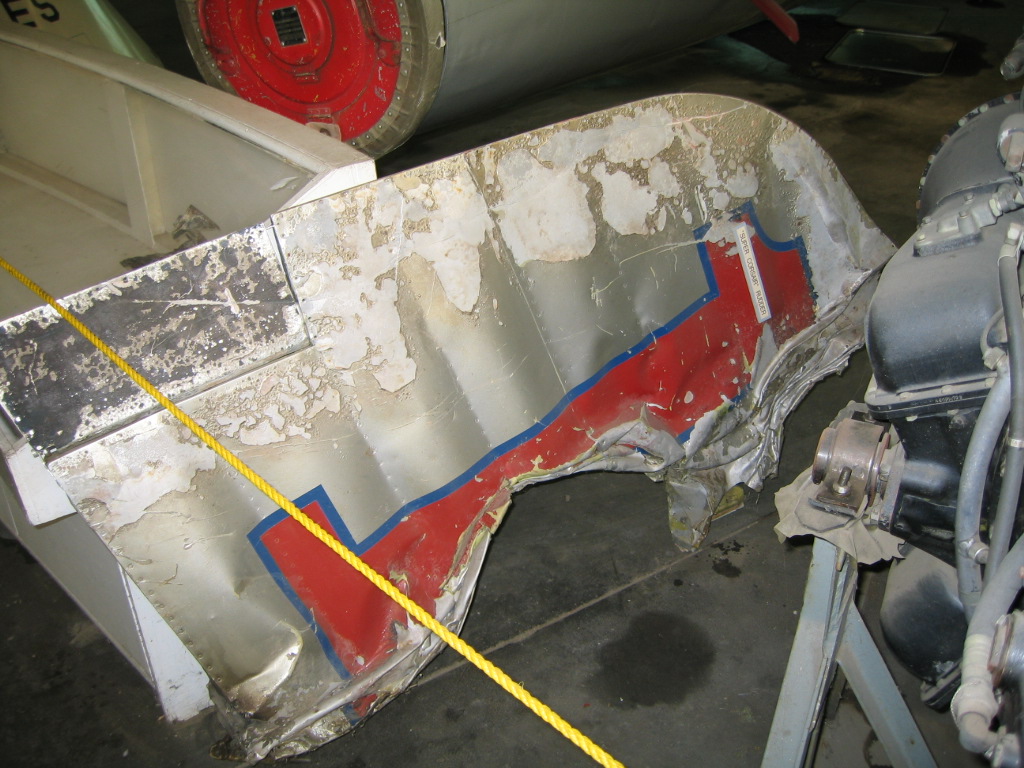
This rudder is about all
that remains of the famous Hinton-Maloney
F-2G Super Corsair, N31518 (Race #1), which crashed on March 19, 1994 at
Williams Gateway Airport, Phoenix Arizona. Pilot Kevin Eldridge
successfully bailed out after the engine caught fire. [Editor's Note:
I was there that day in 1994, and watched the accident from start to
finish. Kevin's survival is a further testament to my firm belief that you
should wear a parachute, and train to use it, when flying fighter-type
aircraft. Related article here.]
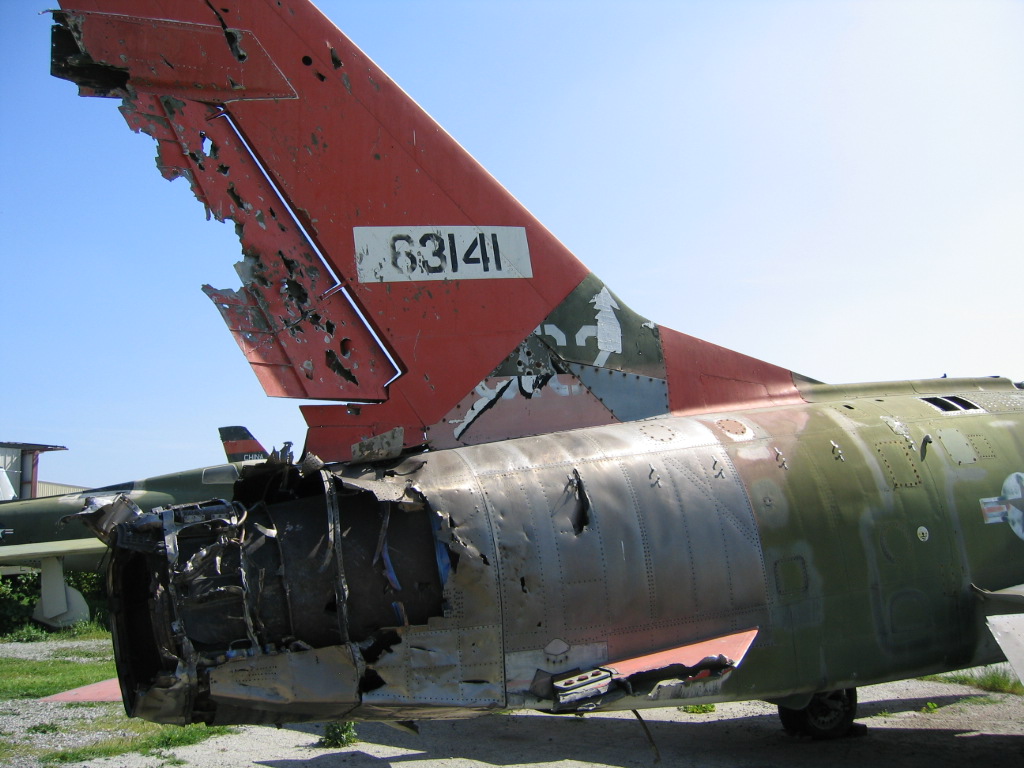
The orange tail is a clear indication that North
American F-100 Super Sabre #56-3141 was converted to an unmanned QF-100
target drone in the last stages of its airworthy life, which included
service in Vietnam. In the late 1980s,
while being flown by Tracor Flight Systems in Mojave, California, it
was the recipient of a missile fired during a U.S. Army test. The entire right-hand stabilator
was blown off, along with much of the rudder and afterburner casing and
rear fuselage skin. The fact that it was able to return for a landing is
impressive. [Thanks to Dan Miller, former Tracor inspector, for the
updated information about this aircraft.]
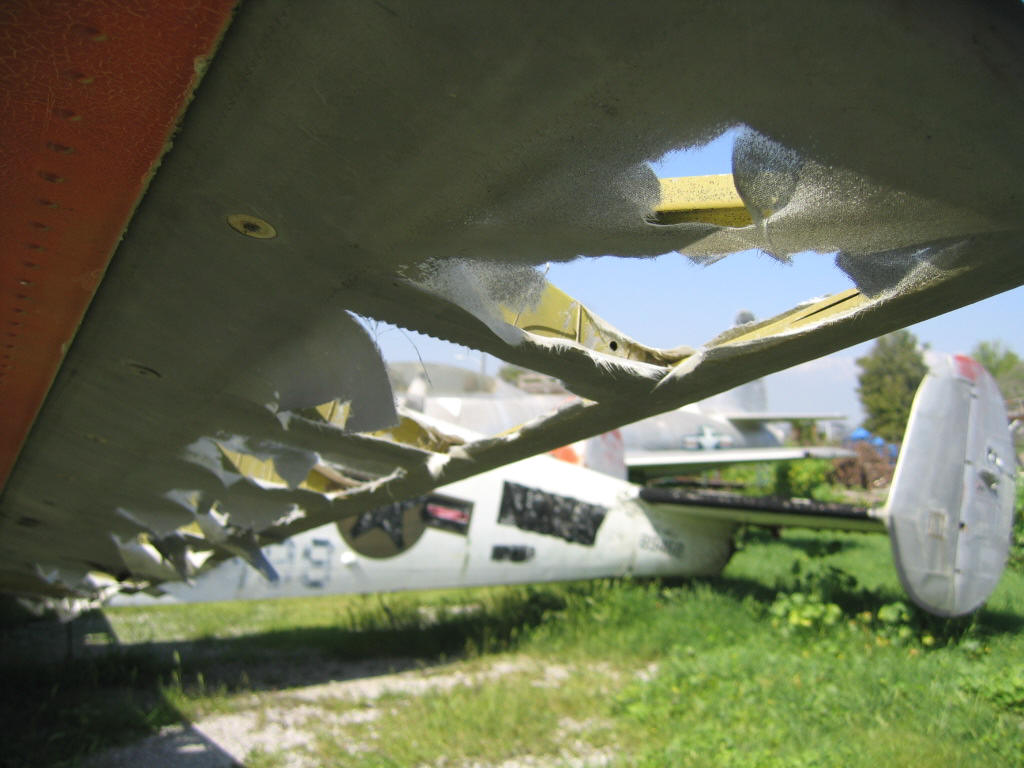
The tattered aileron fabric
on Beech TC-45J (Bu.No. 89468) flutters gently in the breeze. This U.S. Navy
veteran now rests in anonymity under the California sun, surrounded by the
silent carcasses of numerous other warplanes. It almost makes a tear come
to your eye.
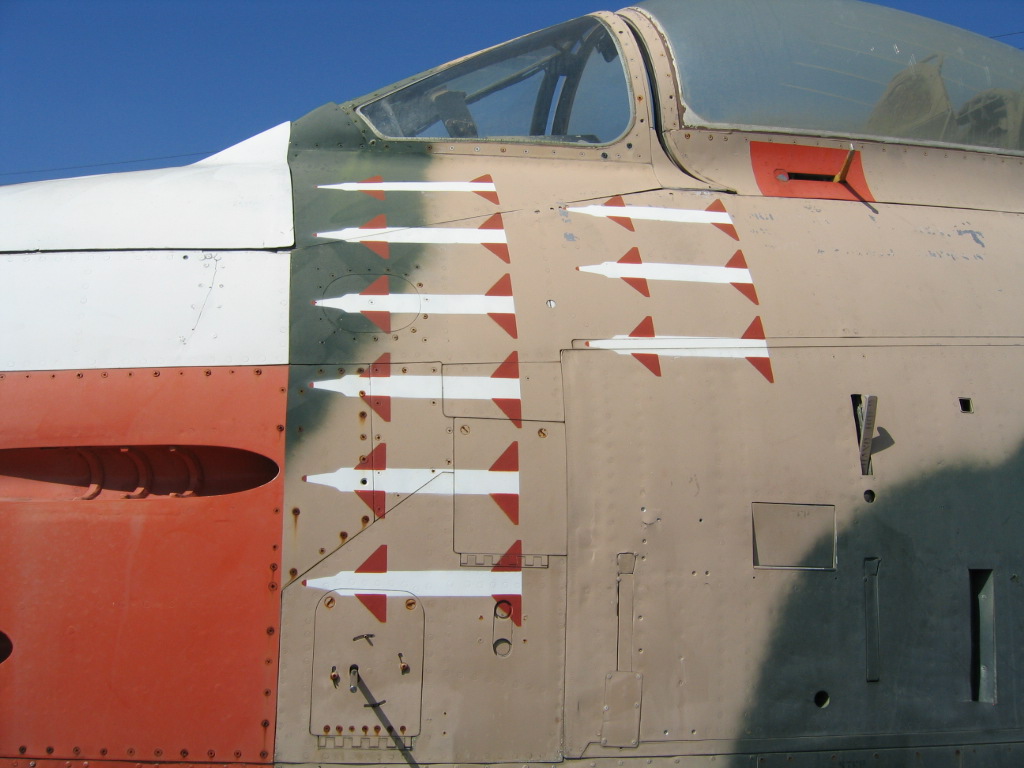
Not just cats have nine lives. North American
QF-86H Sabre (s/n 53-1351) carries the markings of a target drone based at
China Lake Naval Air Weapons Station, California. It also carries nine
"missile-mission" badges on its flanks, evidence of lots of aerial
weapons-training under its belt.
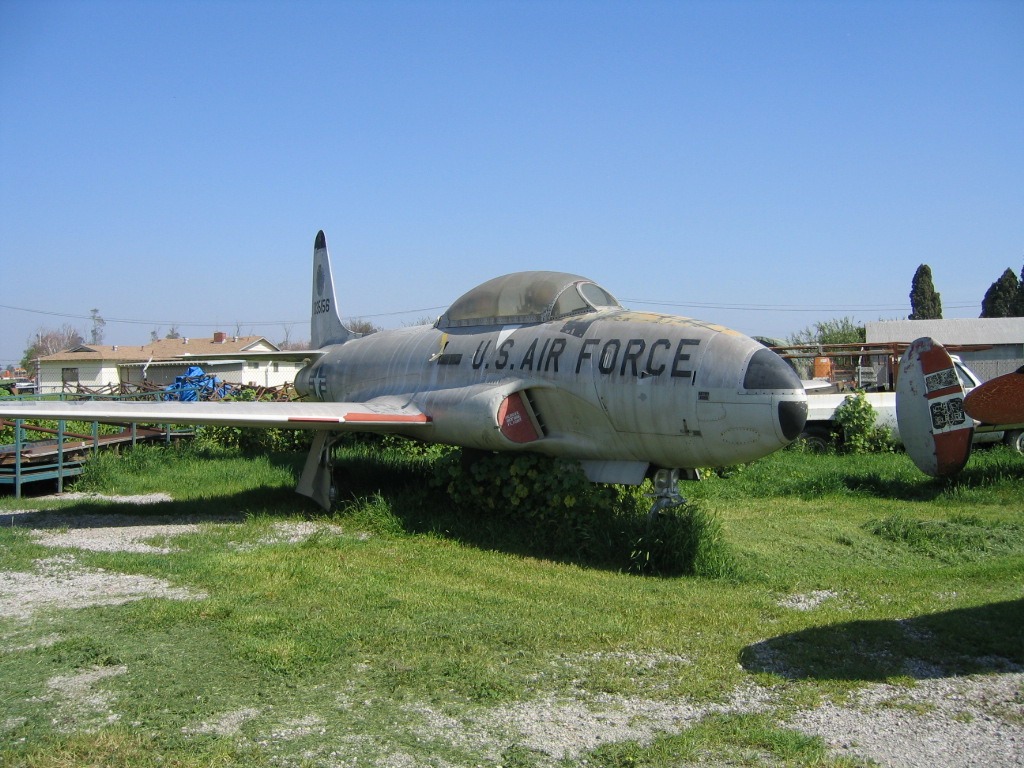
A trusty old Lockheed T-33 Shooting Star sinks
slowly into oblivion.
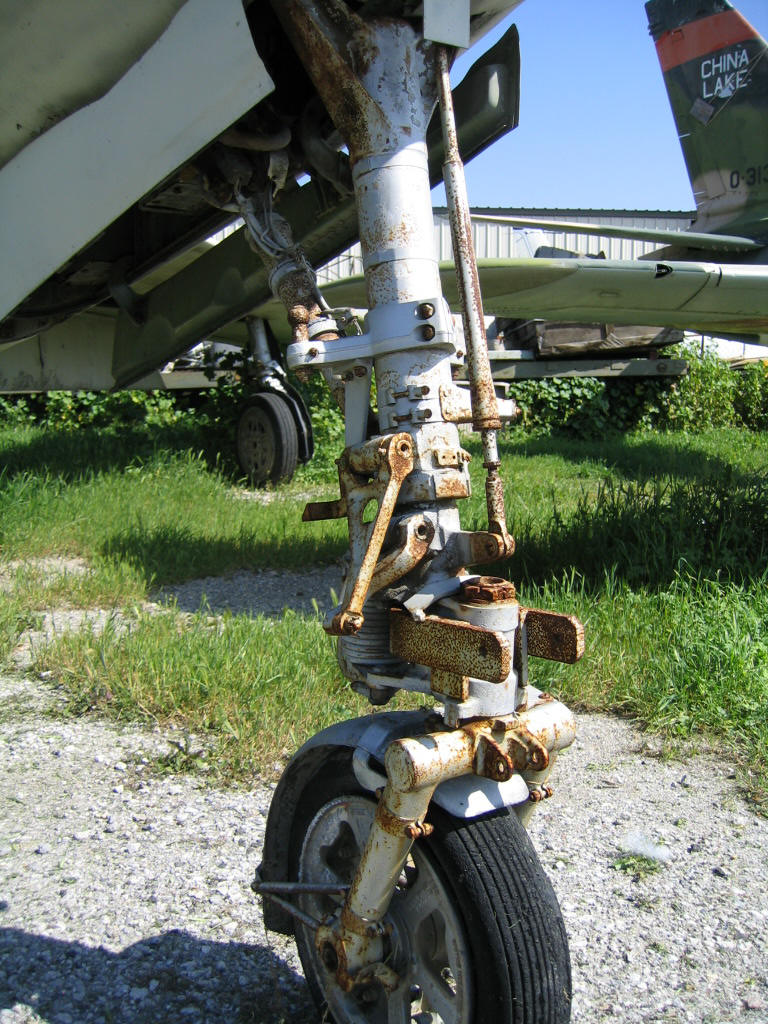
The four-foot tall nose landing gear of a
Republic F-84 Thunderjet. Anyone who has spent quiet, quality time with
1950s-era jet fighters (even if they're sitting dormant in a field), can
tell you that these airplanes exude a certain, special feeling.
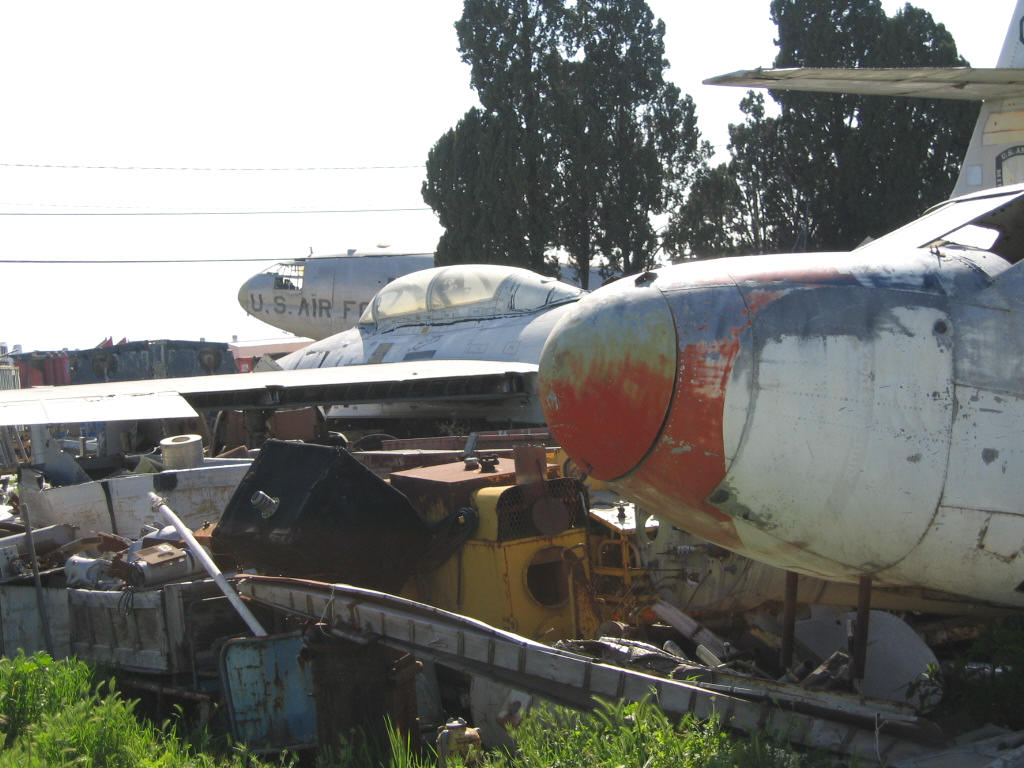
A Beech UC-45 Expeditor, Northrop F-89D
Scorpion, and Curtiss C-46 Commando await their next assignments.
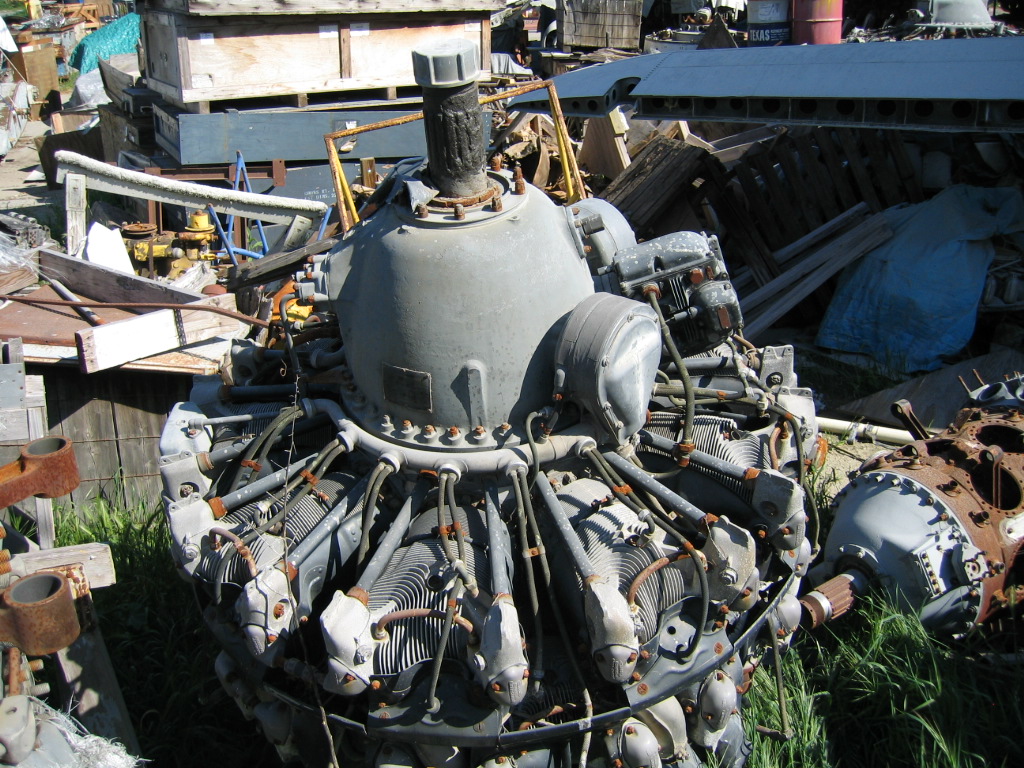
Everywhere you look at Chino Airport, there are
airplanes and parts of airplanes. This engine, believed to be a Pratt &
Whitney R-2800, might have powered a P-47, Hellcat, Corsair, B-26, A-26,
Constellation, Convair, or other aircraft at one time. Perhaps it will do
so
again.
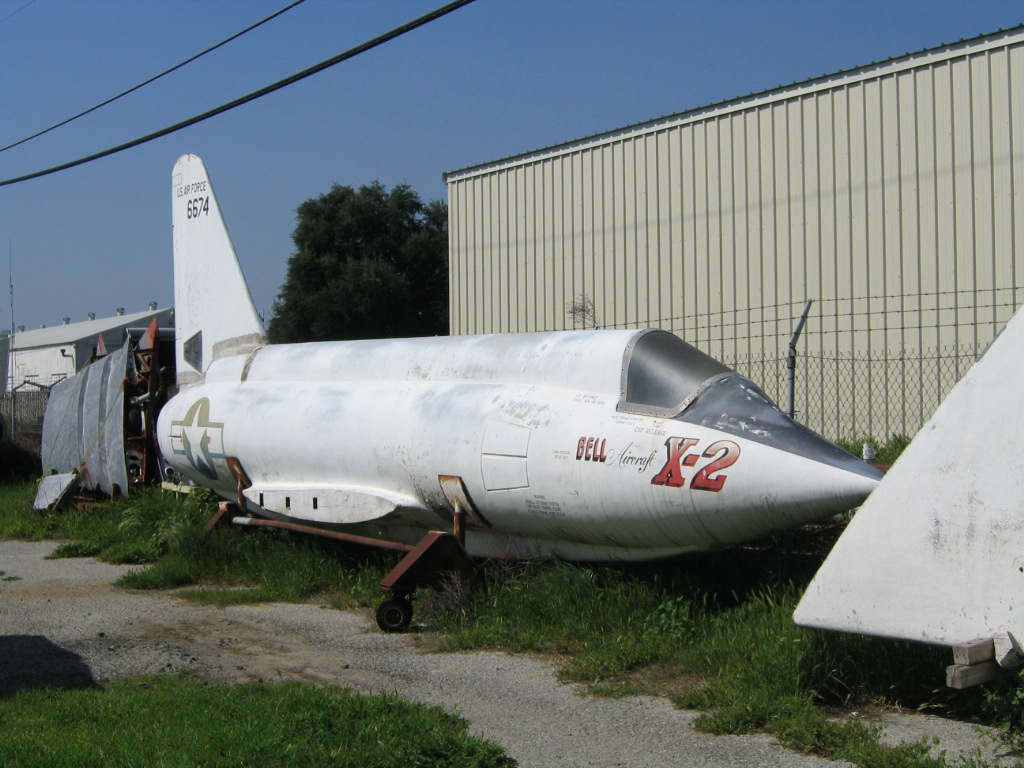
This replica of the rocket-powered Bell X-2
research aircraft (s/n 46-674) was reportedly used as a prop in several
movies, including "Space Cowboys." It now sits, wingless, on a wheeled
dolly behind a hangar in Chino. (For more information on the triple-sonic
X-2 and its most famous pilots -- Pete Everest, Ivan Kincheloe, and Mel Apt
--
see the West Mojave Aerospace Archeology Team's interesting
X-2 page.)
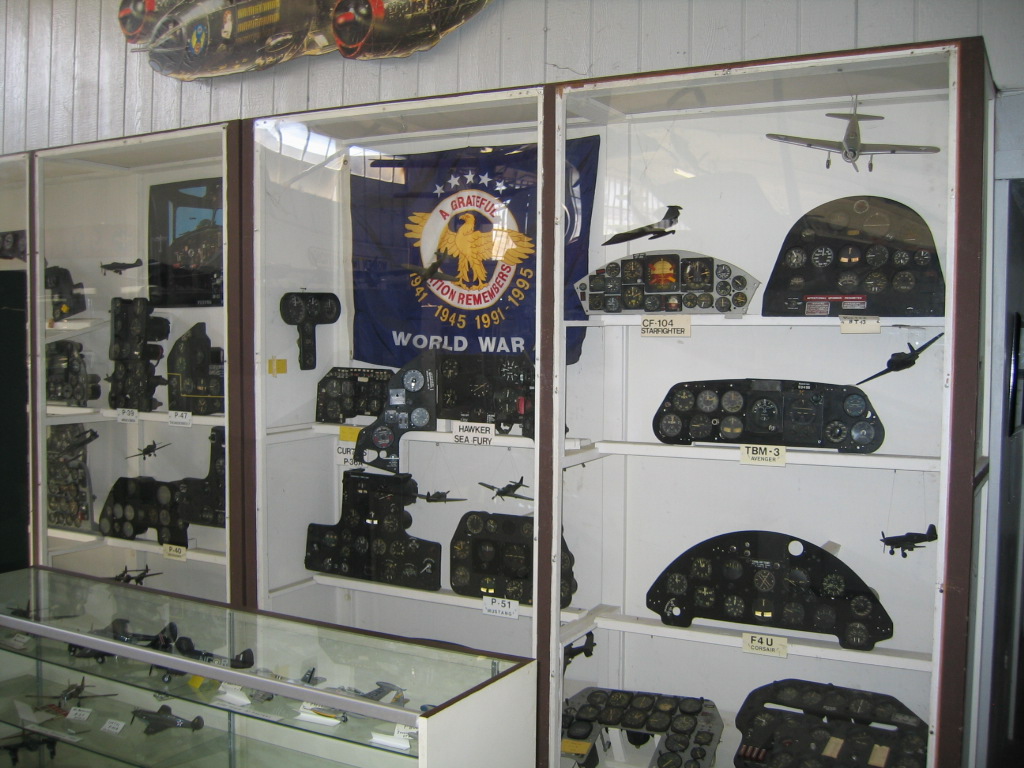
Inside one of the museum's buildings, a display
case full of historic instrument panels is a very popular exhibit.
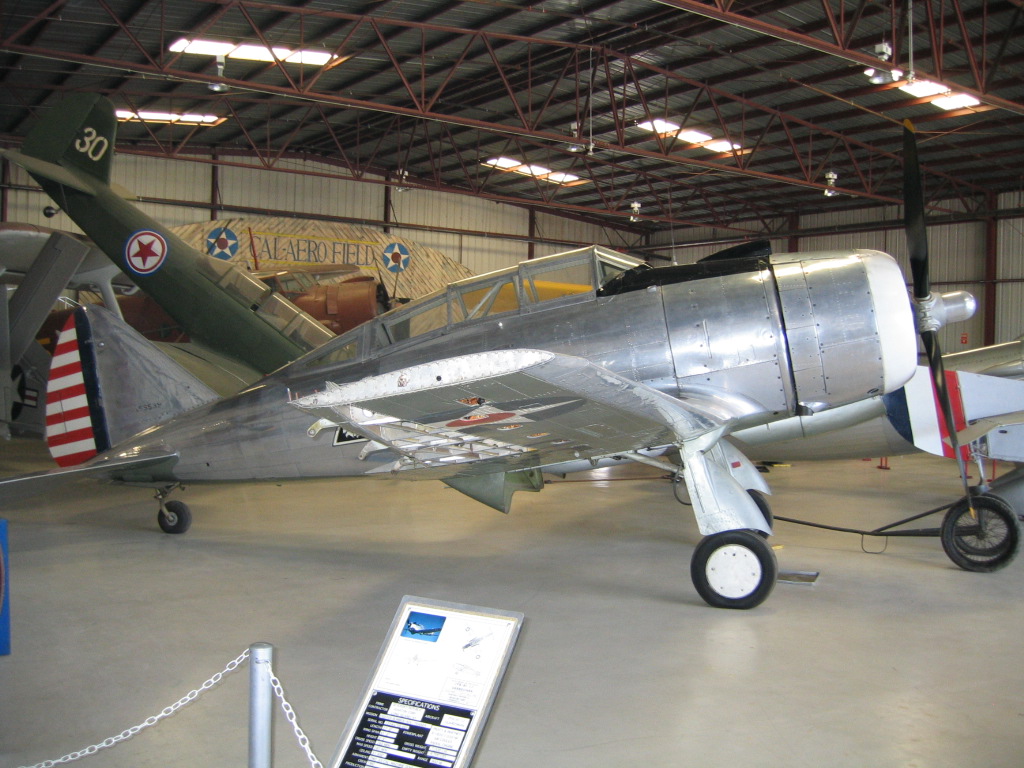
Change of pace: An ultra-rare Seversky 2PA/AT-12
Guardsman. Originally built for Sweden, only 72 of these aircraft were
built. 50 of them were acquired by the U.S. Army Air Corps at the start of WWII,
and this one is believed to be the only airworthy example.
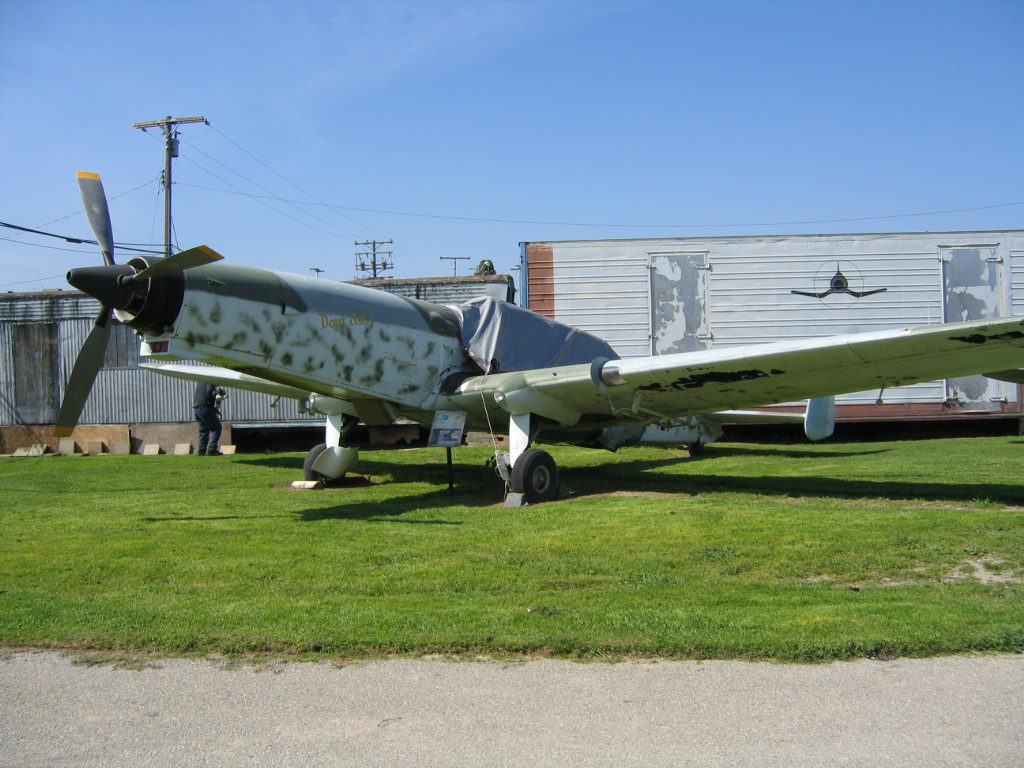
There are only a few examples of the
unusual-looking Swiss F+W C-3605 Schlepp target-tug aircraft left in the
world. This one is in fair condition, and might someday be made airworthy
again.
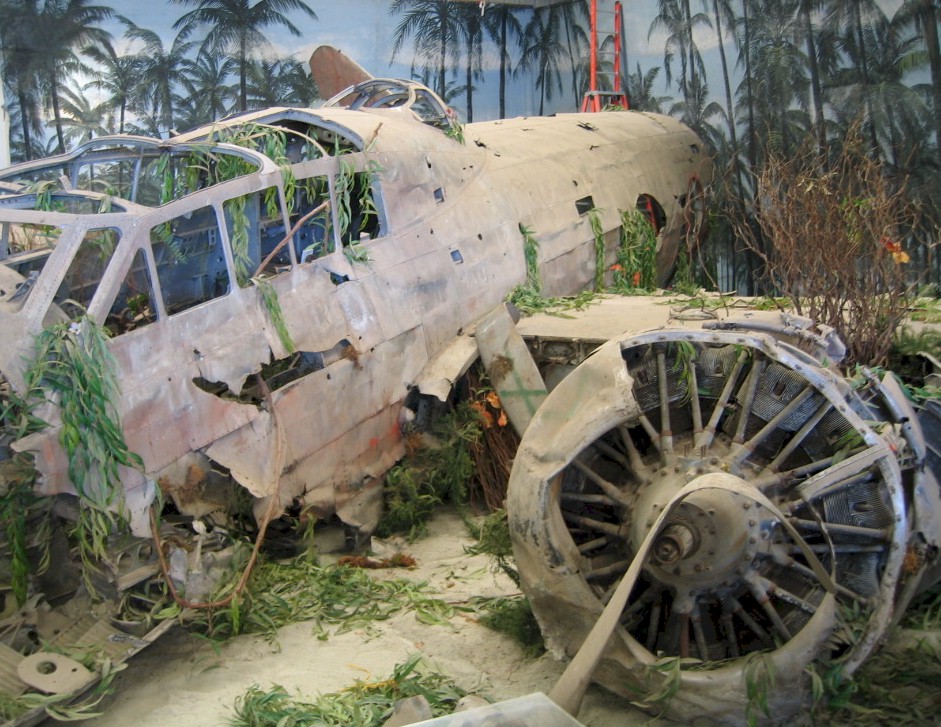
The museum's display of a Mitsubishi G4M1 Himaki
("Betty") bomber of the Imperial Japanese Naval Air Force faithfully
recreates the aircraft's original jungle crash site.
There's a lot more to
see at Planes of Fame. Numerous interconnected buildings and hangars give
visitors a nearly endless series of surprises around each corner.
Museum Information:
The Air
Museum - Planes of Fame is located at the Chino Airport,
approximately 50 miles east of downtown Los Angeles, California. Operating hours are
9:00 AM to 5:00 PM every day except Thanksgiving and Christmas. As of our
visit date in July 2005, admission is US $8.95 for adults, $1.95 for kids
under 12, free for children under 5. They have an excellent gift
shop!
The museum recently opened another branch, the
Planes of Fame
Museum - Grand Canyon in Valle, Arizona. Many of the aircraft
there are airworthy and flown regularly.
Both facilities are "must-see" stops for anyone who loves airplanes.

Contact the editor at:
editor@warbirdalley.com
Copyright © 2005 The Doublestar Group
All Rights Reserved.
These photos may only be used for
your own reference and enjoyment.

